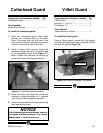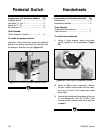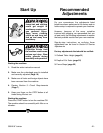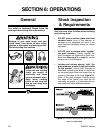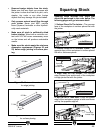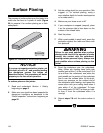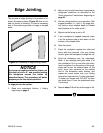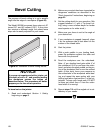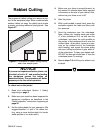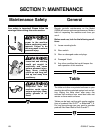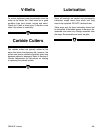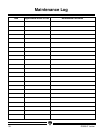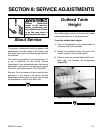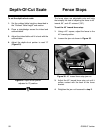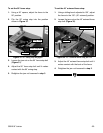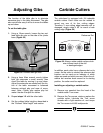
G0526 6" Jointer -27-
The purpose of rabbet cutting is to remove a sec-
tion of the workpiece edge. When combined with
another rabbet cut edge, the rabbet joints create
a simple, yet strong method of joining stock. See
Figure 27.
4. Make sure your fence is moved forward, so
the amount of infeed/outfeed table exposed
is the same as the size of your rabbet. Also,
make sure your fence is set to 90˚
5. Start the jointer.
6. With a push paddle in each hand, press the
workpiece against the table and fence with
firm pressure.
7. Feed the workpiece over the cutterhead.
Note—When your leading hand gets within
4" of the cutterhead, lift it up and over the
cutterhead, and place the push paddle on
the portion of the workpiece that is over the
outfeed table. At this point, focus your pres-
sure on the outfeed end of the workpiece
while feeding, and repeat the same action
with your trailing hand when it gets within 4"
of the cutterhead. To keep your hands safe,
DO NOT let them get closer than 4" from the
cutterhead when it is moving!
8. Repeat steps 7-8 until the your rabbet is cut
to depth.
To rabbet cut on the jointer:
1. Read and understand Section 1: Safety,
beginning on page 3.
2. Make sure your stock has been inspected for
dangerous conditions as described in the
“Stock Inspection” instructions, beginning on
page 22.
3. Set the cutting depth for your operation. (We
suggest between
1
⁄16" and
1
⁄8" for rabbet cut-
ting, using a more shallow depth for harder
wood species or for wider stock.)
Figure 27. Illustration of rabbet cutting effects
and a few sample joints.
NOTICE
If you are not experienced with a jointer, set
the depth of cut to 0", and practice feeding
the workpiece across the tables as
described below. This procedure will better
prepare you for the actual operation.
Rabbet Cutting



